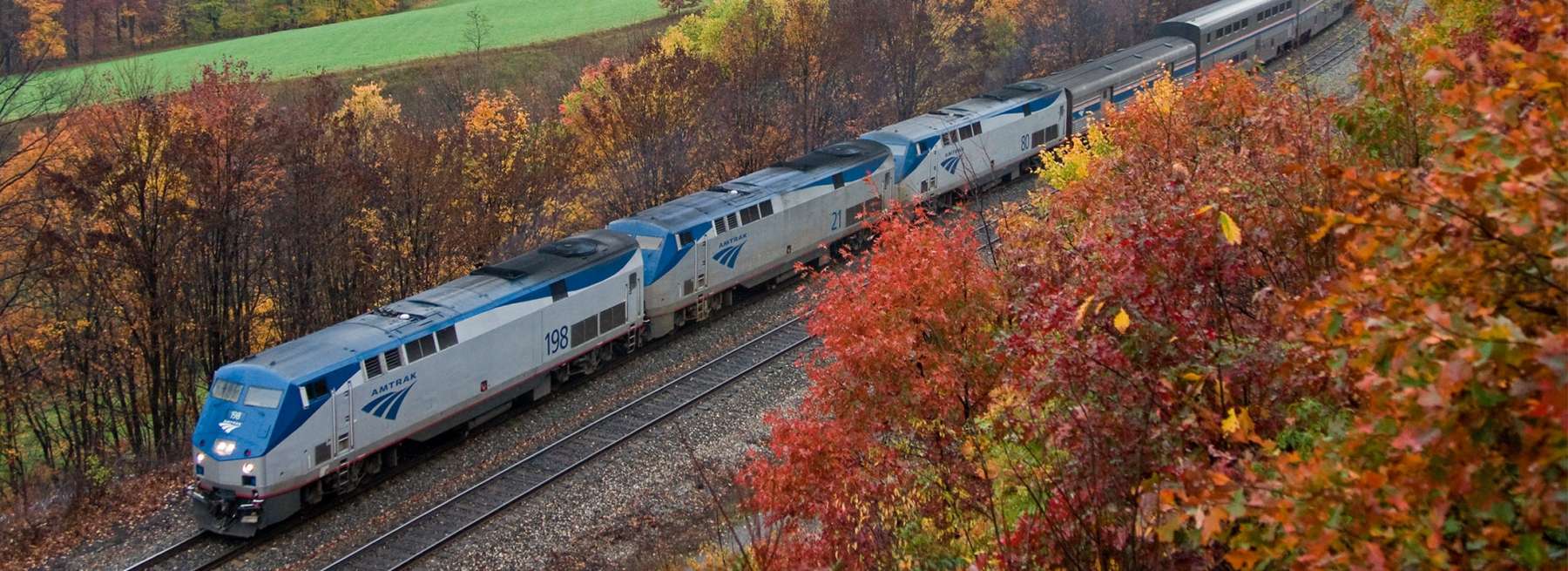Amtrak and Climate Change?
Climate hero Greta Thunberg famously leads by example in part by taking trains rather than fly. That may be catching on in Europe but in the United States that is not usually easily done. However, the Boston-Providence-New York-Washington Northeast Corridor actually has good train service. Providence has about 19 trains each way to New York/Boston (plus the commuter trains to
January 2, 2020, 2:42 pm
By Barry Schiller
Climate hero Greta Thunberg famously leads by example in part by taking trains rather than fly. That may be catching on in Europe but in the United States that is not usually easily done. However, the Boston-Providence-New York-Washington Northeast Corridor actually has good train service. Providence has about 19 trains each way to New York/Boston (plus the commuter trains to Boston) and while electric buses and cars are still a work in progress, Amtrak here is already electrified, giving even greater environmental advantage beyond the efficiency of steel wheel on rail and the way one car shields the one behind it to limit air resistance. Serving central cities instead of promoting sprawl is another Amtrak environmental advantage.
Note that despite chronic underfunding, Amtrak ridership set a record last year with almost 33 million passengers, up about 45 percent in a decade. New Acela sets are on order. And many states (Connecticut and Virginia for example) are supporting improved services. But despite this Amtrak faces numerous challenges including:
- Trump Regime Hostility: Trump and much of the right-wing hate Amtrak, possibly because of its efficiency, its highly unionized workforce, and the way it tends to serve central cities, so no surprise Trump’s budget in effect was to shut it down – though so far Congress has resisted.
- Infrastructure Needs: The Northeast Corridor depends on Hudson River tunnels damaged by superstorm Sandy but their replacement/repair is jeopardized by Trump’s opposition to any Federal funding for that, perhaps because New York/New Jersey did not vote for him! There are also bottlenecks – for example despite use by Amtrak, freights and commuter trains there are only two tracks in places such as East Greenwich and Mansfield. Its noteworthy a Federal study of expanding capacity of the line in southwest Rhode Island developed significant local opposition.
- Climate Change: Various locations in the corridor, notably in eastern Connecticut, are threatened by sea level rise and bigger storms. Here too local opposition to alternatives is significant.
- Fare Policy: Amtrak by law is supposed to make a profit so corridor fares, where there is much demand, are relatively high. Thus Amtrak’s contribution to fighting climate change could be enhanced if lower fares attracted many more riders, a strategy Germany is using. Because our service is geared to New York where trains are often full, there can be many empty seats on the Rhode Island/Massachusetts section that could be sold, even to supplement the commuter service, but this will require cooperation between Amtrak, Rhode Island and Massachusetts. Other states do manage to do that. It would also help to have fare cards integrated with the MBTA and RIPTA the way EZ Pass does for drivers.
- Attention: While RIDOT is helping finance improvements at Providence Station and is promoting a possible Amtrak stop at the airport in Warwick, it seems that despite Greta, improving and promoting intercity rail service as a climate change strategy is barely on the radar for the Transit Climate Initiative and in the environmental community.
This something we can change! We can also check out Amtrak for our own corridor travel at www.amtrak.com
All aboard!






